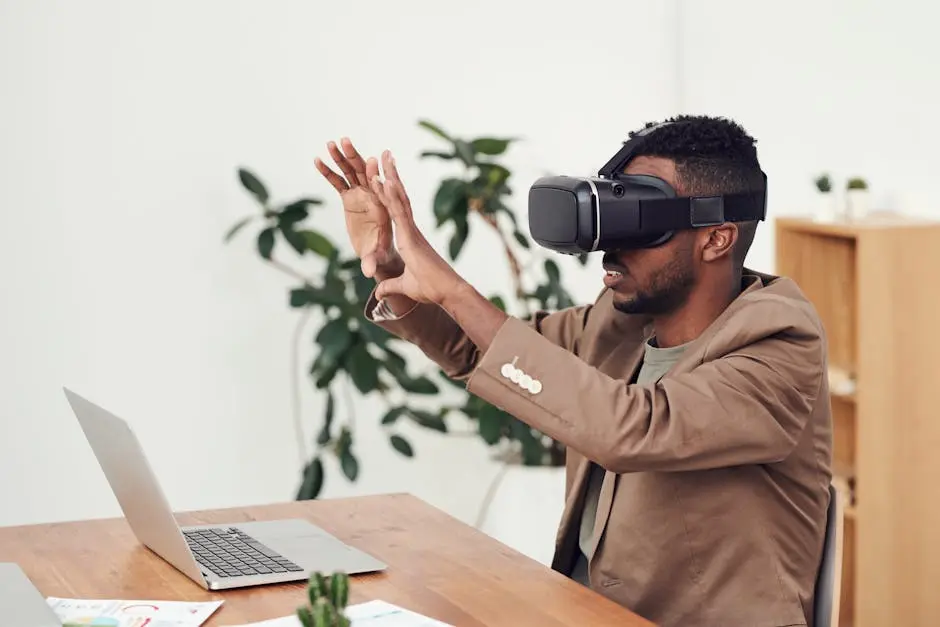Unlocking New Dimensions in Business: The Role of Virtual Reality Solutions
In today’s fast-paced digital landscape, businesses are continually exploring innovative technologies that can enhance their operations. One such technology that has gained significant traction is virtual reality (VR). In this blog post, we will delve into how virtual reality solutions are transforming the way businesses operate, engage with customers, and foster creativity. Let's explore the exciting possibilities that VR offers for businesses looking to thrive in a competitive market.
Understanding Virtual Reality and Its Applications
Before diving into its applications, it’s important to understand what virtual reality is. VR is an immersive experience that simulates real or imagined environments, creating a sense of presence for the users. This section will explain the basic principles of VR technology and its growing importance in various sectors.
At its core, VR technology utilizes computer-generated graphics to place users in an alternate reality. Enveloping the user in visual and auditory stimuli, it creates a space where they can interact as if the environment were real. Just imagine walking through a virtual office building or exploring a distant planet, all from the comfort of your desk. This section will also touch on how such experiences can change perceptions and behaviors.
Moreover, businesses are beginning to recognize the potential of virtual reality as not just a gimmick but a serious tool for innovation. It opens the door to new applications across industries, from real estate showcasing properties virtually to education providing immersive learning experiences. As we navigate through this transformative technology, we will uncover various sectors leading the charge and how VR is becoming a game changer in traditional processes.
Enhancing Customer Experience through VR
One of the most revolutionary applications of virtual reality is in enhancing customer experience. From virtual storefronts to immersive product experiences, businesses can engage customers in ways never before possible. We’ll explore case studies of companies successfully utilizing VR to connect with their audience.
Take the retail sector, for example. Many brands are now offering virtual shopping experiences that allow customers to browse products in a 3D environment. This engaging approach not only captures attention but also helps customers make informed decisions. The ability to visualize items in a realistic setting transforms the traditional online shopping experience into something incredibly interactive and enjoyable.
Furthermore, VR can create memorable experiences that keep customers coming back. Imagine participating in a virtual fashion show where you can see models wearing the latest collections right from your living room. This not only enhances customer engagement but also builds a stronger emotional connection to the brand. We will discuss how brands leverage these experiences to gain competitive advantages in saturated markets.
Alongside this, let’s not forget about customer support. Virtual reality can provide efficient troubleshooting processes by simulating product usage in real-time, guiding customers through solutions in an interactive format. By putting customers in the driver's seat, businesses foster loyalty and improve satisfaction, which is essential in today's service-oriented economy.
Revolutionizing Training and Development
Training programs are evolving with the integration of VR, providing employees with realistic, hands-on experiences without the risks associated with real-life training. This section will highlight how VR can improve learning outcomes and retention, along with examples of businesses implementing VR training solutions.
Imagine a new employee stepping into a virtual representation of their future workspace, exploring every corner and interacting with colleagues in a simulated environment before they even start. Such immersive training not only facilitates quicker onboarding but also alleviates potential anxieties about new roles and unfamiliar settings. Companies are finding that VR provides a safe space to practice complex skills, from medical procedures to intricate machinery operations.
Moreover, VR training can be tailored to fit specific needs, allowing organizations to focus on particular skills that need improvement. As individuals progress, VR systems can track performance and adapt scenarios accordingly, ensuring continuous development. This data-driven approach to training empowers employees by enhancing their learning experiences and ultimately improving job performance.
However, it’s not just about the new hires; seasoned professionals also benefit greatly from ongoing training with virtual reality. Simulations can depict rare but critical scenarios, giving employees the confidence to handle unexpected challenges in real-world situations. We’ll dive into case studies that illustrate not only the effectiveness but also the transformative power of VR in professional development.
Streamlining Operations with Virtual Reality
Virtual reality isn’t just about customer engagement; it can also streamline internal operations. This section will discuss how VR can optimize workflows, improve collaboration, and aid in product design processes, making businesses more efficient.
For instance, design teams can utilize VR to visualize and prototype products in a fully immersive environment. By creating 3D models that team members can interact with, they can make informed design decisions early in the process, reducing the chances of costly errors down the line. This is especially vital in industries like automotive or engineering, where precision is key.
Moreover, VR fosters collaboration across geographical boundaries. Teams from different parts of the world can meet in a virtual environment to brainstorm ideas or troubleshoot issues as if they were in the same room. This eliminates the barriers imposed by time zones and distance, allowing for greater innovation and teamwork. It demonstrates how VR not only enhances productivity but also nurtures a culture of collaboration within organizations.
Challenges and Considerations in Adopting VR Technology
While VR offers numerous advantages, there are challenges to consider when integrating this technology into your business. We'll discuss factors such as cost, training, and technology infrastructure that may affect your decision to adopt VR solutions.
One significant hurdle is the initial investment required for VR hardware and software. While costs have decreased, they can still be a barrier for small and medium-sized enterprises. It's essential to weigh these costs against the potential benefits and return on investment, ensuring that VR aligns with your overall business strategy.
Additionally, employees must be equipped with the necessary training to effectively utilize VR technologies. Without proper training, the technology can become a hurdle rather than a help, leading to confusion and inefficiencies. It’s crucial to create a robust training program that supports employees in learning how to navigate and implement VR in their roles.
Finally, the technology landscape continues to evolve rapidly. Keeping up with the latest advancements and ensuring your VR solutions are compatible with existing systems can be daunting. Businesses must remain agile and adaptable to navigate these challenges while maximizing the potential of virtual reality. In this section, we will discuss best practices for successful VR adoption tailored for businesses of all sizes.
Embracing the Future of Business with VR
As we have seen, virtual reality solutions are not just a futuristic concept; they are here now, transforming the business landscape in real time. By embracing these technologies, businesses can unlock new dimensions of engagement, creativity, and efficiency. The potential of VR is immense, and those who adapt and innovate will undoubtedly lead the way into a new era of business. Are you ready to take the plunge into the world of virtual reality?

